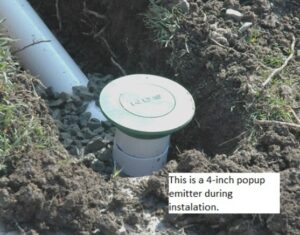PC Doctor Module. Having a desktop computer instead of a laptop is convenient, because it’s easier to access and repair components. However, desktops tend to have more issues than laptops — especially when they’re fairly new. If you are equipped with the right information and the tools necessary, you can diagnose and fix many issues on your own. If you own a desktop PC Doctor Module, then you should be happy to know that troubleshooting its issues is much simpler than with a laptop.
This article will introduce you to some basic guidelines for diagnosing issues with your PC and fixing them on your own if possible. It covers problems such as a blue screen error, freezes, glitches or slow performance. Even if the problem seems minor, it’s best to troubleshoot it as soon as possible before something more serious might occur. Here are several ways that you can diagnose and fix common PC issues on your own at home:
Perform a startup check
Before you try to diagnose and fix your computer’s issues, you should check its startup process. When you turn on a computer, it goes through a series of steps to boot up and load its operating system. However, some problems can occur during this process, which can be resolved by checking the BIOS of your computer in its startup sequence. To check your computer’s startup sequence, do the following:
– Shut down your computer and unplug it from the wall. It’s best to do this when there’s no time pressure. Wait for a couple of minutes to make sure that the system has completely shut down. – Press the power button to turn on your system. Wait for the POST process to be completed. This is the part that happens before you see the BIOS screen. – If you see a screen with error messages, then there’s a problem with your computer’s hardware. A POST error means that there’s a problem with your computer’s hardware or its configuration. You’ll need to open up your PC Doctor Module and check the components that are responsible for the POST process. – If you see a blue screen error, then your computer has crashed. Luckily, this is a problem that’s easy to troubleshoot.
Check your cables and ports
If your computer is experiencing an issue, the first thing you should do is check its cables and their ports. This includes any external devices that are connected to your computer, such as your printer, mouse, or any other accessory. If one of your computer’s cables is damaged or broken, then it can cause issues with your computer’s performance or functionality. To check your computer’s cables and ports for issues, do the following:
– Turn off your computer and unplug all of its cables. This includes your computer’s power cable and other external accessories. – Examine the ends of your cables and check for tears or damage. If you find any, then it’s best to replace them as soon as possible. – Also, examine the ports on your computer’s motherboard and external devices. If there’s a build-up of dirt or debris, then you can clean it with a can of compressed air. – You can also use a cotton swab to carefully clean the ports or any other delicate area. Make sure to unplug your computer and let it sit for a couple of hours to let it dry completely.
Update your computer’s software
If you’re experiencing performance issues, a software update might be able to fix the problem. If you own a Windows computer and have installed a newer version of Windows 10, then it’s possible that the update is causing issues on your computer. To see if a software update is affecting your computer, do the following: – Open the Start menu and click on Settings. Navigate to Update & Security and select Windows Update.
– Here, select Check for updates to check if a new update is available. If so, download and install it to see if it solves your computer’s issues. – You can also manually check for updates by navigating to this page. Make sure to check for updates regularly to avoid issues that can be easily resolved. – If your computer is running a very old version of Windows, then it’s possible that an update is causing issues. In this case, you should try to find the last update that worked for your computer.
Run diagnostics
If you’re experiencing a blue screen error, then you should try to run diagnostic tests to see if they can detect the cause of the issue. There are a few different tools that you can use to run diagnostic tests on your computer. You can use Windows’ own built-in troubleshooter, an app like Blue Screen View, or a 3rd party diagnostic software. – Navigate to Settings and click on Update & Security to open the Windows Troubleshooter. – Click on View All and select Diagnose and Fix Problems. – Follow the instructions to run the diagnostic tests. You might need to restart your computer so the tests can complete. – If the diagnostic tests don’t reveal any issues, then you can try to restart your computer in Safe Mode to rule out a software issue.
Try restarting your computer
If you’re experiencing an issue with your computer, then it’s best to try restarting it. This can resolve many issues, especially if you’re running a very old version of Windows on your computer. If you’ve updated your computer and are still experiencing issues, then you should try restarting it a couple of times. It can be helpful to restart your computer in Safe Mode if you’re experiencing continuous issues. – A safe mode restart can help you identify and resolve issues. You should try restarting your computer normally after resolving any issues.
Check for malware
If your computer is running slowly, there’s a chance that an infection is slowing it down. Malware is a common cause of a slow computer or any other issues. You can use an antivirus program to scan your computer for malware. If it finds an infection, then you can use one of the following methods to clean it: – You can use Windows’ built-in tools to remove the infection from your computer. Navigate to the Control Panel and click on Programs and Features. Select the malicious program and click Delete. – There are several programs for removing malware from your computer. Some of the best programs are Malwarebytes, HitmanPro, and Spyhunter.
Conclusion
If you own a desktop PC Doctor Module, then you should be happy to know that troubleshooting its issues is much simpler than with a laptop. This article will introduce you to some basic guidelines for diagnosing issues with your PC and fixing them on your own if possible. It covers problems such as a blue screen error, freezes, glitches or slow performance. Even if the problem seems minor, it’s best to troubleshoot it as soon as possible before something more serious might occur. It’s best to perform a startup check, check your cables and ports, update your computer’s software, run diagnostic tests, and restart your computer if it is experiencing issues.





More Stories
How to Use TopFollow APK to Grow Your Followers Naturally? A Simple Guide for Beginners
What Are the Best Omegle Replacements? A Friendly Guide to Chat Random Text Safely and Easily
Where’s the Best Place to Buy Backlinks in 2025? A Friendly Guide with Marketing 1 on 1 Tips